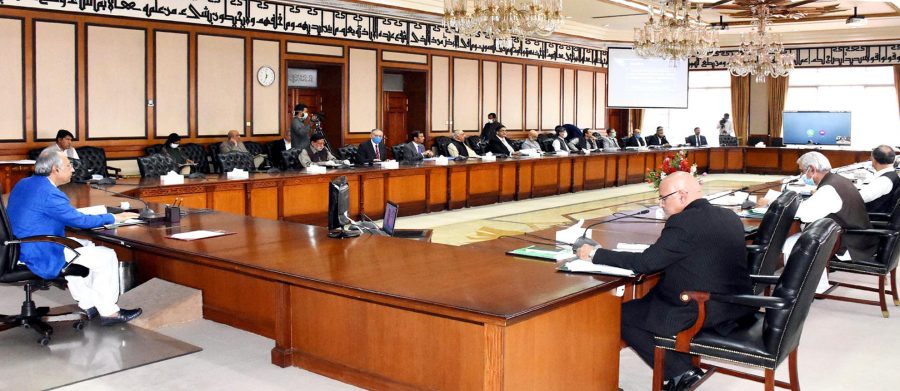Staff Reporter
Islamabad
The Economic Coordination Committee (ECC) of the Cabinet Wednesday asked the Ministry of National Food Security and Research (MNFS&R) to closely monitor the wheat procurement process and actively engage with the food departments and PASSCO to ensure 8.25 million tons of wheat are procured as per the set target.
The ECC meeting, chaired by Adviser to the Prime Minister on Finance and Revenue Dr Abdul Hafeez Shaikh, also asked the ministry to submit to ECC a detailed report in the next two to three weeks on the progress of wheat procurement by PASSCO and provincial food departments and overall wheat production in the country with the help of reliable data and figures to have a clearer picture for better planning in future.
The ECC also called for exploring possibilities for extending more time to flour mills to procure wheat from the market, allowing inter-provincial movement and preventing smuggling of wheat outside Pakistan, according to statement issued by the Finance Ministry.
The ECC gave the instruction after a report was presented to it by MNFS&R on wheat procurement by the public sector in the current season.
The Ministry, in its report, told the ECC that the wheat procurement target for the crop season 2019-20 was set to 8.25 million tons, with 4.5 million tons to be procured by Punjab, 1.4 million tons by Sindh, 0.4 million tons by Khyber Pakhtunkhwa, 0.1 million tons by Balochistan and 1.8 million tons by PASSCO.
So far PASSCO and the provincial food departments procured 3.96 million tons of wheat, approximately 48 % of the target while the procurement pace was slow in Khyber Pakhtunkhwa and Balochistan and both the provinces had been requested to speed up the procurement process.
The ECC also took up another proposal by the MNFS&R for fixing an intervention price for cotton and after a detailed discussion asked the Ministry to come up with a comprehensive package focusing on cotton seed research, overall research and development, better water management, deregulation of the sector and zoning of crop growing areas to enhance productivity and competitiveness of the local crop.









